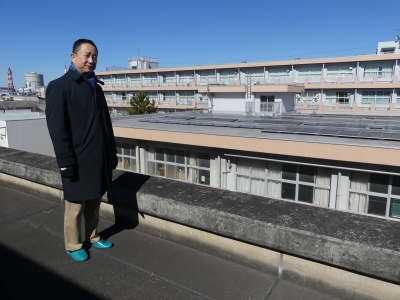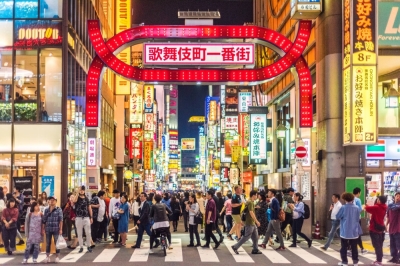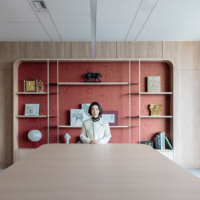The major earthquake that jolted Ishikawa Prefecture’s Noto Peninsula on Jan. 1, 2024, drew attention to the area’s severe issue of an aging and shrinking population, but efforts to revive the Anamizu Town, which is in the center of the Noto Peninsula, will aid the overall recovery, according to an expert researcher at the Nomura Research Institute (NRI).
In April, NRI reached an agreement with Anamizu as Mayor Koki Yoshimura looked for an ally to compile and carry out a recovery plan after the magnitude-7.6 earthquake took 38 lives, destroyed half of the 4,115 residences and cut off water and power supplies, forcing nearly 4,000 people to evacuate.
In creating the plan, the local government and residents had to address the region’s population problem, since the evacuation could further exacerbate it. “The plan is not just to reconstruct the town. We needed to develop something new and more forward-looking to revitalize the place amid a declining population,” said Tsuyoshi Sakaguchi, an expert researcher for NRI who spends half of each week in Noto to help realize the plan.
Anamizu is often called “the gateway to Oku-Noto,” the far part of the peninsula, because it is the center of land and air transportation networks, including a local rail terminal, a highway and an airport with two flights to Tokyo every day. “Since the town has geographical potential, its revival should have a positive impact on the whole Noto Peninsula,” Sakaguchi said.
On Dec. 27, Anamizu released its recovery plan, which involves four major projects working toward disaster resilience, community and industrial recovery, better child-rearing and education, and the revival of Oku-Noto as a gateway, with the hope that residents can envision a positive future for the region.
NRI’s mission was to help Anamizu compile the plan based on surveys it designed and analyzed, as well as on opinions presented by members of the reconstruction conference, who are mostly young residents. It also set out strategies on how to move forward with specific projects — including revitalizing the commercial area around the station — by helping to generate ideas and, when necessary, selecting outside organizations and companies as partners.
As part of the mission to help the town start new business activities. NRI provides know-how and networks for technologies that Anamizu might need, such as self-driving services and decentralized autonomous infrastructure. If the town expresses interest in something, NRI checks the feasibility and connects it to relevant companies and ministries. Introducing things like solar and water power generation, water circulation system, power storage and telecommunications in small local areas will help them avoid suffering from blackouts or water cutoffs in severe disasters, Sakaguchi said.
The peninsula’s unique geography made it hard to support residents in the aftermath of the earthquake. A national highway runs along a coastline with steep mountain slopes that were hit by tsunamis and landslides. In addition, some seaports found that the quake had altered the seabed, preventing vessels from reaching port. Rebuilding the area’s infrastructure will take time, but that will be handled by the central and local governments.
What NRI could do was to utilize its know-how on compiling recovery plans, drawn partly from its experience with the Great East Japan Earthquake in 2011 and the 2016 Kumamoto Earthquake. But that did not mean the recovery plans for those two disasters would automatically be applied to Noto’s case because society has changed significantly since then, Sakaguchi said.
“More than the past recovery plans themselves, it was helpful to know how important it is to listen to local residents,” he continued. “Things have changed dramatically since the pandemic,” he added. Digital transformation has rapidly permeated people’s lives, and one effect of this has been to make them more open to diversity, affecting how evacuation spaces should be set up after a big earthquake, he said.
His colleagues who had worked on NRI’s support for Kumamoto advised gathering opinions from residents of all ages and reflecting them in the plan. Sakaguchi said they reviewed all of the survey responses for this purpose.
Some community leaders helped senior citizens fill out the surveys, and others put up posters promoting them at convenience stores and supermarkets. “The way in which to reflect their voices was different from before, but we learned from past cases that it is essential to value what they hope to do,” Sakaguchi said.





















With your current subscription plan you can comment on stories. However, before writing your first comment, please create a display name in the Profile section of your subscriber account page.